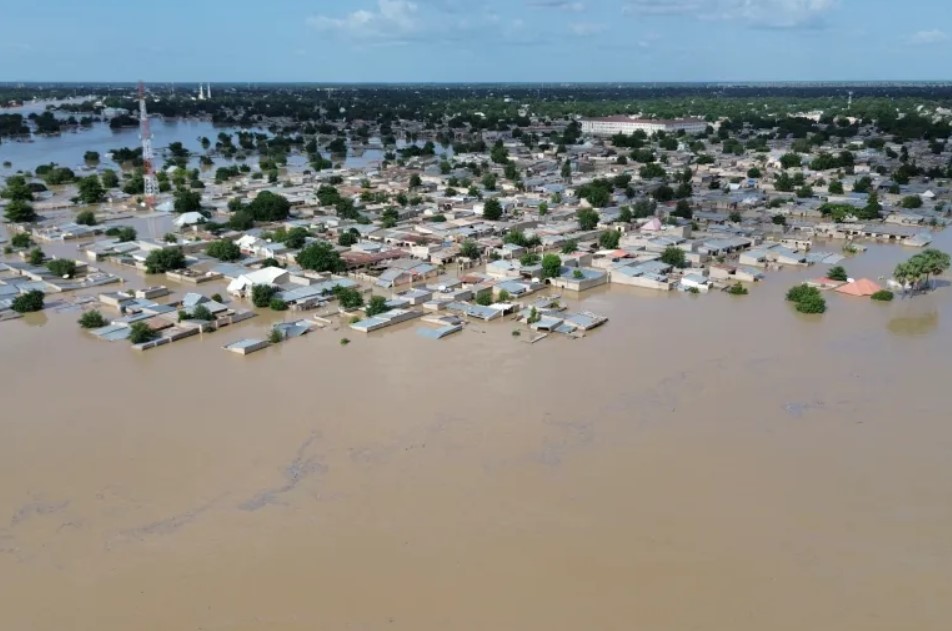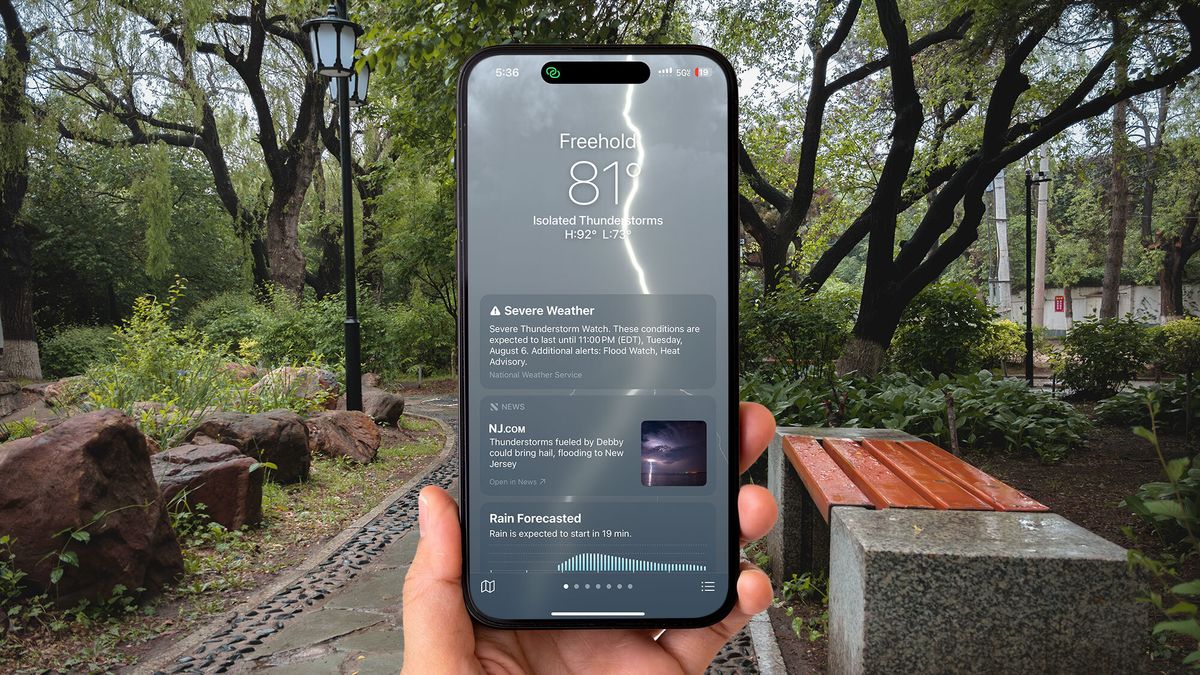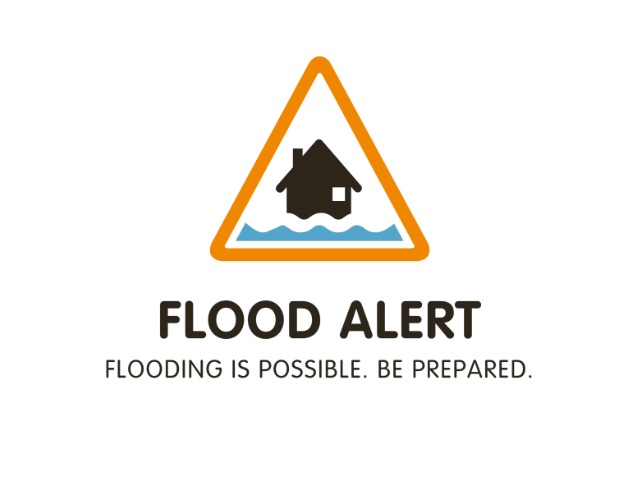With smartphones, African governments can more easily reach people living in high-risk flood communities.
By Michael Akuchie
In 2024, the Alau Dam overflowed following torrential rainfall in Borno, a state in Northern Nigeria. The dam’s collapse overwhelmed the state and its neighbours with flooding, resulting in loss of life, submerging roads, and affecting nearly half a million people.
But imagine if the people had known in advance that a disaster of that magnitude was imminent. Repeated flood alerts delivered via smartphone might have given the people of Borno a chance to escape the devastation they endured for many days.
Sadly, this is not Nigeria’s first major flooding incident. In 2022, the release of water from the Lagdo Dam in Cameroon, combined with steady rainfall, led to the deaths of over 600 Nigerians and the displacement of many others. Numerous roads were overtaken by floodwater, making it difficult for relief materials to reach those affected. The contamination of nearby drinking water sources caused a cholera outbreak in the country’s North-Eastern region.
The National Bureau of Statistics (NBS) estimated that the cost of destruction caused by the flood ranged between ₦3.79 billion and $9.12 billion. Across Africa, climate change—along with human factors such as clogging open-air drainages with refuse and rapid deforestation—has enabled flooding to cause more damage than in the past.

Kenya experienced a remarkable amount of rainfall in 2023, which resulted in multiple cases of flooding and landslides across 36 of the country’s 47 counties. In addition to the deaths of 160 people and the forced relocation of 500,000 others, public infrastructure such as schools and roads was destroyed. Crops and livestock were also affected, subjecting many Kenyans to food shortages. Similar to Nigeria’s case, a flood alert mechanism in Kenya might have helped prepare residents for what lay ahead.
The concept of a flood warning system is not entirely new. In the past, communities were alerted through radio broadcasts, television adverts, and even by word of mouth. While these methods are still available, the gradual shift in public attention from radio and television to smartphones has made them less effective.
Findings from Statista project an increase in smartphone users in Sub-Saharan Africa from 534 million to 786 million by the end of 2030. In a time when news, the latest job vacancies, football fixtures, and much more can be accessed on a smartphone, it is no surprise that more people are embracing the device. Africans’ growing interest in smartphones is precisely why delivering flood alerts through push notifications or dedicated apps is likely to succeed.
Many smartphone users rely on Google Maps for guidance when travelling along unfamiliar routes. On some days, people also consult their smartphone weather apps before going out, to determine whether precautions—such as taking an umbrella—are necessary. Smartphones have proven useful for route and weather advice, so incorporating flood alerts to inform users of what to expect and how to prepare in advance makes a great deal of sense.
The UK Government defines a flood alert as a signal “that flooding is possible, so you should prepare now”. While flooding was once mostly confined to the rainy season, climate change has disrupted this pattern, and communities can now be overwhelmed even after a single day of rainfall.
Across Africa, flood alerts delivered via smartphones can easily reach areas that traditional methods, such as television and radio, often fail to access. Unlike televisions that depend on electricity, smartphones are battery-powered and can last for several hours. Once a flood alert is sent via a push notification, people stand a better chance of receiving it and responding swiftly, compared to a television advisory that may never reach communities without power.

With smartphones, African governments can more easily reach people living in high-risk communities. In addition, individuals can contribute to flood alert apps by sharing updates on the situation in their respective areas, similar to how information is circulated during election seasons. For example, if a flood is predicted to affect Lagos Island and a warning has already been distributed to residents, those living on the Mainland—particularly in areas closest to the Island—can also notify the authorities and other residents if the flood begins to encroach on their neighbourhoods.
FloodCitiSense is a great example of an app that utilises crowdsourced information to inform residents about floods and how to prepare. Used in three European cities—Rotterdam, Birmingham, and Brussels—residents in these areas support the developers’ efforts by regularly reporting rainfall intensity and its effects. Through photos and text updates, users can provide the app with real-time information during an ongoing flood.
Having an app like this in every African country—particularly Nigeria, Cameroon, Mali, Sudan, and other nations prone to recurring floods—would give people living in high-risk areas the opportunity to evacuate in time.
Developing a smartphone app that can deliver flood alerts to users will require collaboration between tech startups and African governments. Since collaboration is widely seen as a catalyst for the continent’s growth, it is only fitting that both parties combine their efforts for the greater good.
In addition to sharing flood alerts, smartphone apps can also educate users about the consequences of flooding and how to prepare for it. Ghana’s “My Flood Risk Accra” offers residents of Accra a user-friendly platform to gain insights into the effects of floods and how they can mitigate the damage.
Although the app also provides users with timely weather forecasts, the fact that residents receive practical tips about flooding is particularly commendable, as it encourages them to take greater responsibility for their environment. This could lead to a reduction in refuse dumping in drainages and promote healthier waste disposal habits.

For smartphone-enabled flood alerts to be effective, Africa will need to reduce digital illiteracy, particularly among the elderly and those living in rural areas. This cannot happen overnight, so a long-term policy aimed at educating the population and making smartphones more affordable over a five- to ten-year period could make a significant difference.
African governments will also need to advocate for a centralised flood alert system. Rather than developing multiple apps that serve the same purpose, national weather agencies should collaborate with startups to create and promote a single flood alert app. This app should not only provide timely notifications but also offer guidance on managing natural disasters.
While smartphones have proven to be a valuable tool for disseminating information, not everyone can afford one. Therefore, countries with high poverty rates should also consider sending flood alerts via SMS. This approach would ensure that people with basic feature phones remain informed, thereby increasing the number of individuals aware of potential flood threats.
As climate change concerns intensify and more flood incidents are recorded, governments across the continent must prioritise the creation of national flood alert apps in their respective countries. These systems will empower people living in high-risk areas to prepare in advance. If properly utilised, flood alerts can save countless lives in Africa.
Michael Akuchie is a tech journalist with five years of experience covering cybersecurity, AI, automotive trends, and startups. He reads human-angle stories in his spare time. He’s on X (fka Twitter) as @Michael_Akuchie & michael_akuchie on Instagram.




